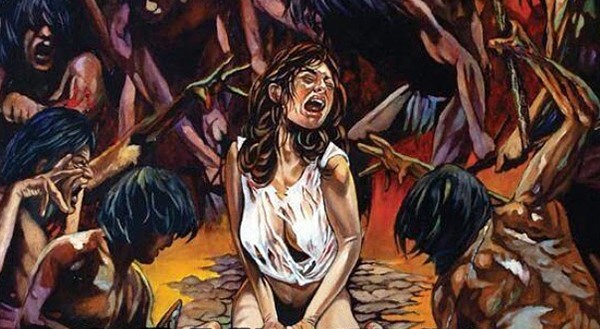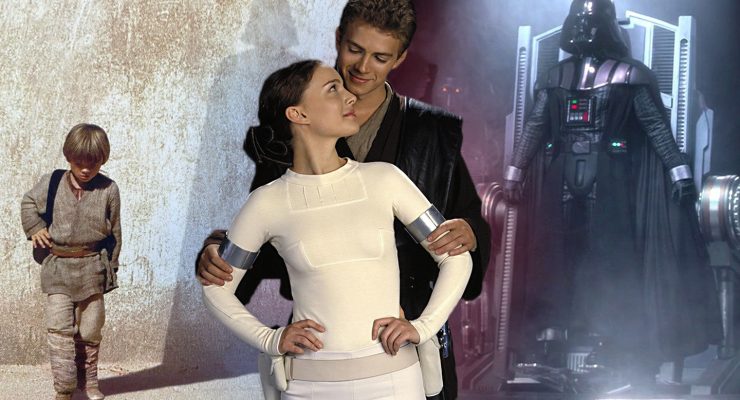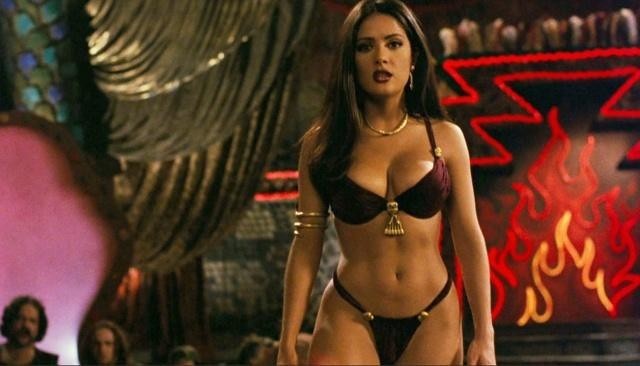Tony Black on how Fast & Furious owes a debt to 80s and 90s action movies…
You may have avoided the Fast & Furious franchise. I did, for ages. To me it was nothing more than ‘car porn’, full of slick machismo, bad dialogue and poorer plot choices. 2008’s semi-reboot Fast & Furious began a steady change across the next decade which stands as one of the most remarkable in any franchise in blockbuster cinematic history – what started as a B-movie car film from a Z-grade director, taking a title from a little known 50’s B-picture, evolved into a blend of The Italian Job, James Bond, and every single 80’s & 90’s action film with a cheesy hero and a shit ton of explosions you can imagine.
To those decades a franchise steered to multi billion dollar takings by shrewd helmsmen Justin Lin & James Wan (now in the hands of F. Gary Gray) owes its greatest debt; as Fast & Furious 8 debuts (or the differently title The Fate of the Furious in the US – F8 geddit geddit?), let’s look back at some of the tent pole action pictures across the last thirty years this entertainingly ridiculous–and ridiculously entertaining–franchise wouldn’t exist without.
Firstly, without question, the James Bond franchise. This becomes more apparent than ever in F8, with a plot which truly takes a cue from the 80’s & 90’s big scale blockbusters produced by the 007 series across those decades; from its effective pre-credits sequence as Vin Diesel’s Dominic Toretto in Cuba takes on a minor foe with a slight tether connection to the story, slick government paymasters giving orders, calculating terrorists with master plans involving nuclear weapons & military bases & submarines & global-scale nefarious activities; through to the gadgets and glamour which the F&F franchise is still happy to indulge itself in.
Where Bond himself grew up a decade ago with Casino Royale, F8 if anything most resembles Die Another Day in places – the last colourful, ridiculous outing for the worlds greatest secret agent with ice bases and invisible cars. The technology and superhuman heroics visible in the Furious franchise at this point are easily on a par with that ludicrous level and revels in it, frankly. While still playing to that dumbed down market, simultaneously it knows exactly the audience it’s playing to.
Speaking of super-heroics, we can now basically all agree Dom and his ‘family’ are superheroes, right? They achieve feats no human being could ever survive. You only have to look at the (inspired) inclusion of Jason Statham in F7 as Deckard Shaw, at that point the apex of the series’ villainy, and his subsequent titanic battles with Diesel and Dwayne ‘The Rock’ Johnson’s noble slab of brawn Luke Hobbs, to see how what began as a driving franchise has evolved into a series where modern superheroes do battle across familiar landscapes. They don’t wear capes or costumes, but Dom may as well be Batman and Statham may as well be Bane.
If anything they most resemble the superhero blockbuster leads many of us grew up watching in the 80’s and 90’s, who have now moved into the pantheon of aged legends – they have become the 21st century equivalents of Schwartzenegger, Stallone, Lundgren, Willis, Snipes etc… indeed to a degree Kurt Russell, who appears as a slick-talking government agent as if to underscore the point: the baton has been passed from one set of action stars to another. Without them, there would be no Fast & Furious franchise as we know it today.
If we didn’t have Commando, where Arnie’s John Matrix takes on a horde of South American goons in order to save his daughter’s life, we wouldn’t have Dom trying to save his son in F8. Were it not for Bruce Willis’ John McClane taking on Nakatomi Plaza in Die Hard, to save his trapped wife among others from Alan Rickman’s cool German terrorist, would we have seen Dom fight tooth and nail in F6 to save his beloved Letty from Luke Evans’ slimy Brit-baddie Owen Shaw? What about Michael Bay’s The Rock from 1995, in which uptight government agents allow Sean Connery’s imprisoned British secret agent to partner with Nicolas Cage’s green FBI agent (almost like Scott Eastwood’s green suit in F8), to take down Ed Harris’ rogue general who has missiles on Alcatraz? All for what? The promise of seeing his estranged daughter.
What’s the common thread running through these seminal action pictures, many of which have the insane stunts, one liners and explosive situations the Fast & Furious franchise take to the next level? It’s simple. It’s what most major blockbusters front-loaded with iconic action stars always had.
Family.
This is, of course, the central tenet of the Fast & Furious franchise. Diesel growls it regularly in every film and since roughly Fast Five, and especially following Paul Walker’s tragic demise amidst filming Furious 7, everything in Chris Morgan’s writing goes back to this rag-tag crew of former crims, racers, hackers and agents being a makeshift ‘family’. Indeed the promotion of F8 is heavily geared around Dom turning on his loved ones in service of Charlize Theron’s icy, subversive cyber-villain. The entire history of the overblown, save the world action genre is rooted however in family – even the Bond franchise, which is underpinned with the tragedy of family loss as fuel for 007’s motivations.
Fast and Furious is about as subtle as a brick in every fashion, the theme of family especially, but it’s purely an extension of what the genre has been giving us for the past three decades, since the Herculean action stars of Arnie & Sly etc… became one-man armies, free of personal harm or consequence, who we could all root for as pillars of pure escapism. All the Fast & Furious saga did is distill an entire action sub-genre into its own, very specific franchise.
One that has become the rarest beast in all of Hollywood – a continuing series of increasing rather than diminishing returns. Heck even Dame Helen Mirren crops up in the newest one, as a self-confessed fan who wanted a part! The only other franchise to pull a similar trick, tap these action conventions of old in the modern era, is Tom Cruise’s Mission Impossible saga, now shooting its sixth movie. Even that series, with movies which arguably keep getting better or maintaining a quality threshold, have lacked that sense of internal, natural evolution and continuity the Fast & Furious franchise has developed.
It’s a truly unique construct, even in the age of the franchise blockbuster and expanded universe – and while it may never quite reach the creative or financial heights of F7 (odds on it won’t make quite the record-breaking haul that movie did), it’s supposed final two movies before the saga ends at its tenth film will cap off a feat which may never, in all honesty, be repeated. What it may do, once the dust settles, is remind the studios a huge market still exists out there for the huge scale, knowingly silly, superheroic action blockbusters Fast & Furious has brought back into fashion this decade.
Tony Black










